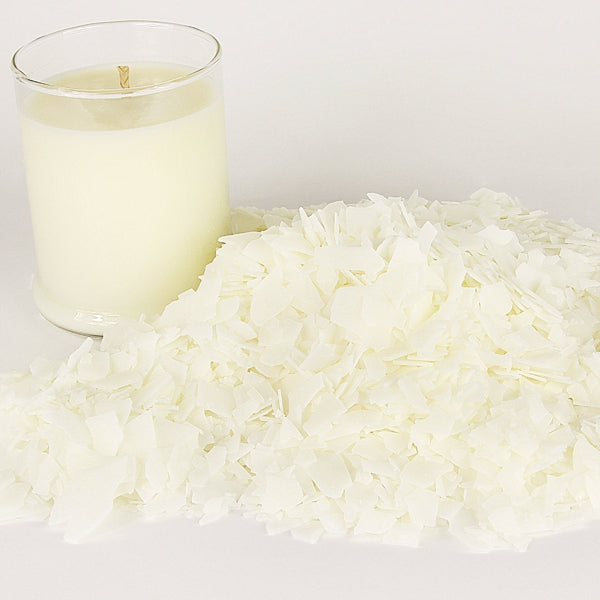From Wick to Wax: Comprehending the Chemistry Behind Soy Wax Candles and Their Ecological Impact
As we illuminate our areas with the warm glow of candles, there exists a world of intricate chemistry behind the relatively easy act of lighting a soy wax candle light. The selection in between soy and paraffin wax extends past plain aesthetics, diving into the realm of ecological impact and the really composition of the products. Recognizing the molecular structure of soy wax and its combustion procedure drops light on the exhausts released right into our surroundings. Join us as we unravel the scientific details behind soy wax candle lights and explore their implications on our setting.
Soy Wax Vs. Paraffin Wax
When contrasting soy wax and paraffin wax for candle light making, it is vital to recognize the unique characteristics and benefits of each material. Soy wax is an all-natural, renewable source stemmed from soybean oil, making it environment-friendly and biodegradable - crystal soy candles. On the other hand, paraffin wax is a by-product of oil refining, which increases problems about its environmental impact and sustainability
Soy wax candles shed cleaner and discharge much less soot compared to paraffin wax candles, making them a healthier option for interior air quality. Furthermore, soy wax has a lower melting point, permitting a longer-lasting candle that disperses scent extra properly. Paraffin wax, on the other hand, often tends to melt faster and much less easily, possibly releasing damaging chemicals into the air.
From a sustainability perspective, soy wax is favored for its biodegradability and renewable sourcing, aligning with the expanding customer choice for eco mindful items. While paraffin wax has actually been a typical choice in candle making as a result of its cost and convenience of use, the change towards green alternatives like soy wax is getting energy in the industry.
Chemical Make-up of Soy Wax

Combustion Process in Soy Candles
The chemical structure of soy wax directly affects the burning procedure in soy candles, influencing aspects such as burn time, fragrance release, and ecological effect. When a soy candle is lit, the warm from the fire thaws the wax near the wick.
The burning efficiency of soy candles is influenced by the pureness of the soy wax and the quality of the wick. A clean-burning soy candle light with a see this properly sized wick will decrease and create a steady flame residue formation. This not just prolongs the burn time of the candle light but likewise improves the launch of fragrances. Furthermore, soy wax candles have a lower ecological impact compared to paraffin candle lights as a result of their biodegradable and eco-friendly nature.

Environmental Advantages of Soy Wax

Taken into consideration a sustainable choice to standard paraffin wax, soy wax provides remarkable environmental benefits that make it a preferred option amongst eco-conscious consumers. Soy wax burns cleaner and generates less soot than paraffin wax, adding to much better indoor air top quality and decreasing the need for cleaning and maintenance. On the whole, the ecological advantages of soy wax line up with the growing demand for green and lasting products in the market.
Recycling and Disposal Considerations
Reusing and correct disposal of soy wax candles play a vital duty in maintaining environmental sustainability and reducing waste in communities and homes. The first step is to ensure that the candle has actually melted entirely when it comes to recycling soy wax candle lights. This can be achieved by allowing the candle to melt up until the wick is no more usable, and then letting the staying wax cool and solidify. When the wax has strengthened, it can be meticulously gotten rid of from the container.

In regards to disposal, if recycling is not a choice, soy wax candle lights are naturally degradable and can be safely gotten rid of in most family waste systems. It is constantly advised to check with regional reusing facilities or waste administration services for specific standards on candle disposal to make certain appropriate handling and environmental protection.
Final Thought
In conclusion, the chemistry behind soy wax candle lights exposes their ecological benefits over paraffin wax candle lights. Soy wax, stemmed from soybean oil, burns cleaner and produces less residue when contrasted to paraffin wax. The burning procedure in soy candle lights is extra efficient, bring about a longer and extra even shed. Additionally, soy wax is sustainable and naturally degradable, making it a much more sustainable selection for candle production. Recycling and appropriate disposal of soy wax candle lights better contribute to their environmental influence.
When contrasting soy wax and paraffin wax for candle light making, it is important to recognize the distinctive features and benefits of each material (crystal soy candles).Soy wax candle lights shed cleaner and produce soy wax candles much less residue contrasted to paraffin wax candle lights, making them a healthier option for interior air quality.Thought about a sustainable choice to traditional paraffin wax, soy wax uses remarkable environmental benefits that make it a popular option amongst eco-conscious consumers. Soy wax burns cleaner and creates much less soot than paraffin wax, adding to much better interior air top quality and lowering the requirement for cleansing and upkeep.In verdict, the chemistry behind soy wax candle lights exposes their ecological benefits over paraffin wax candle lights